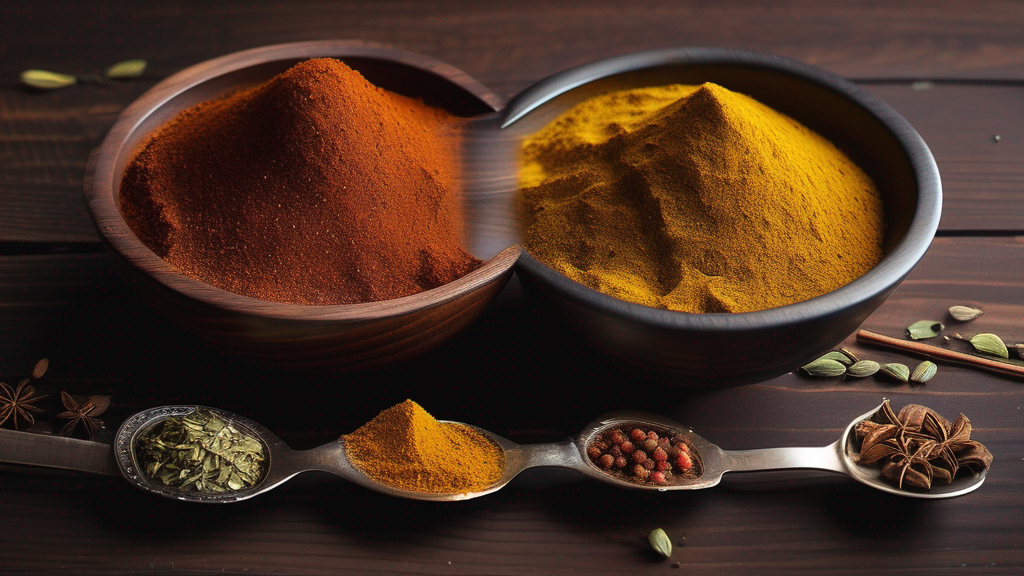Biryani and garam masala – two familiar spice blends, but what’s the difference? This guide unravels the mystery, explaining their unique flavors and when to use each for the perfect dish. These two masalas have gained considerable popularity in recent decades and are widely used in Indian cooking. Although both have traditional recipes or formulas, they are clearly two different masalas.
What distinguishes these two spice blends from one another, though? Let’s examine biryani masala vs garam masala, each one in turn.
BIRYANI MASALA: WHAT IS IT?
All that makes up biryani masala is a blend of spices that give this age-old treat flavor and aroma.
A mixture of fragrant spices, including cardamom, cloves, cinnamon, rose petals, and mace, is used to make biryani masala. It is used to give your food flavor, especially aroma.
The majority of biryani masala mixtures contain a few standard ingredients.
• Seeds of black pepper • Cardamom green • Cardamom in Black • Clovers • Seeds of Coriander • Cumin Seeds • Seeds of Caraway • Cinnamon or Cassia • Anise Star • Ginger • Mace • Powdered Turmeric • Powdered Dry Mango
Another thing that stands out about this list is the lack of spices that generate heat.
GARAM MASALA: WHAT IS IT?
An additional well-known masala from India is Garam Masala. Warming spices like nutmeg, cardamom, cloves, and black pepper are combined to make garam masala. It is used to spice up and add taste to foods like dals, chole, and rajma. It can also be used to make chaats, spicy rice dishes, curries, and other things. This is usually done to improve the dishes’ overall flavor.
Now, the following is a list of typical garam masala ingredients: Bay leaf, green cardamom, cinnamon, nutmeg, cloves, black pepper, mace, fennel seeds, and star anise are among the ingredients.
You may also notice that the spices in this masala blend are similar to those in biryani masala. The true distinction is in the ratio of these spices.
Let’s now examine the variations between garam masala and biryani masala.
Look:
Typically, biryani masala is light brown. Because the manufacturers incorporate paprika or red chili powder into their mixtures, the packaged ones occasionally have an additional reddish-orange color.
However, because all of the ingredients in garam masala are roasted before ground, the masala always has a slightly brown appearance.
Scent:
The fragrant aroma of biryani masala makes you want to eat more. However, Garam Masala has a potent aroma better suited for adding flavor to food.
Texture:
The texture of garam masala is typically fine and smooth. It aids in giving the other ingredients in the recipe more flavor. Conversely, the texture of Biryani Masala is a little bit coarser. It’s common to find some whole spices in this mixture.
Method of Cooking:
Garam Masala has two applications. It can be added when the base masala is cooking and as a garnish when the meal is ready. We use it to extract the flavors from the spices in the first step. It only gives the food a light scent in the second stage. The Biryani Masala can be utilized in multiple phases. This is only necessary if you enjoy spicy biryani rice, and your rice must be fragrant. Using it as a garnish is generally unnecessary, and you can completely omit it at this point in the cooking process.
Uses:
The Biryani Masala is specifically made to make Biryanis and Pulaos. This masala can also be used to make some curries that aren’t vegetarian. However, it’s only really utilized for conventional rice dishes. Conversely, Garam Masala isn’t connected to any particular recipe. It’s a basic masala that gives the food more taste.
Cost:
The cost of biryani masala is marginally higher than that of garam masala. Although the amounts of each spice vary, they are both made from a mixture of aromatic herbs. Generally speaking, biryani masala is more intricate, utilizing more spices in smaller amounts. Conversely, garam masala is prepared using fewer but higher-quality spices.
Try Following Recipes: Navratan Biryani, Homemade Prawn Biryani
